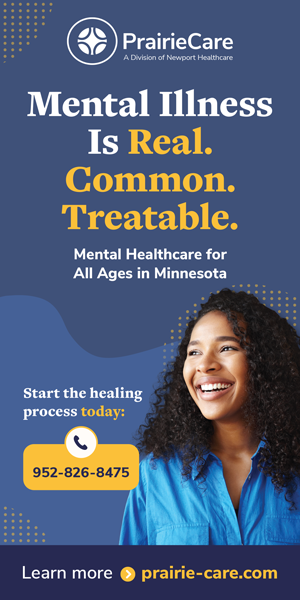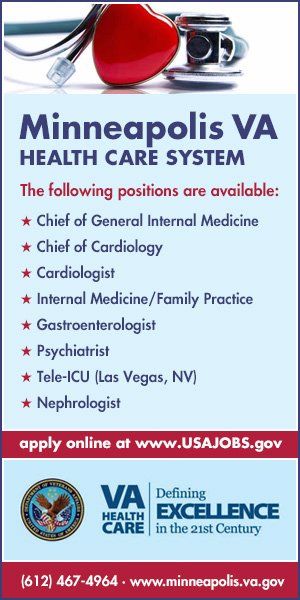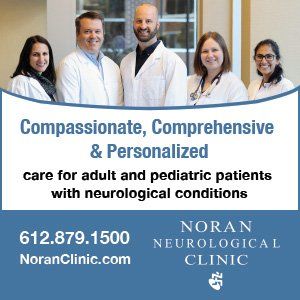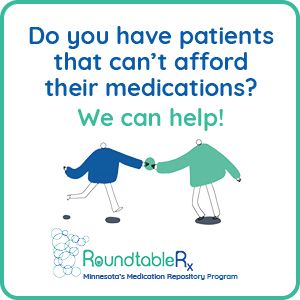ssues pertaining to mental health are a critical part of overall health care delivery and, conservatively, affect one out of every five of us, crossing every demographic and socioeconomic group equally. Patients don’t always realize they are experiencing mental distress – or if they are, they may not know where to get the care they need. At every point on the care delivery spectrum, from ED situations to annual check-ups, undiagnosed and untreated mental health conditions may play a vital role in patient outcomes. Quickly screening for and identifying such conditions has always been a complex challenge – from developing reliable assessment tools to incorporating them into best practice standards.
Cover Two
Integrating Physical and Behavioral Health Care
Solutions and benefits to the challenges
BY Zomi Bloom, MBA, and Savanna Campbell, RN
Health care professionals from all sectors have worked hard to address these issues. This work continues to become more successful, enhancing the ability to screen for and identify individuals, presenting in a wide range of health care settings, who need therapeutic support. Thanks to this work, we now know that mental health assessments for patients presenting in the emergency department can rapidly, efficiently and accurately identify previously undiagnosed problems. This includes identifying mental health issues in patients with nonpsychiatric problems. Primary care providers in clinical settings can now easily screen for depression and anxiety at routine visits. These screening processes help normalize mental health issues. Patients feel that if their family doctor is asking about mental health, for example, then mental health must be something they can talk about. Routine screenings address these barriers.
It doesn’t take much to make a big difference. Even a two-question screening tool has been shown to result in a threefold increase in physician diagnosis of depression among adults.
Developing a Better Process
A recent study by Wilderness Health and students from the University of Minnesota shows that Minnesota hospitals are diagnosing mental health concerns more effectively than ever before. Medical student Morghan Byrnes and dentistry student Seun Oginni researched how behavioral health and medical care can work together. Their research identified three of the primary challenges to integrating mental and behavioral health care with the broad range of health care and community services. These challenges were identified as:
- Improving integration between providers.
- Improving integration between family and community.
- Improving leadership support.
Increasing access to integrated behavioral health care (IBH) has been a key strategy for Wilderness Health for nearly a decade. It has also been an important element of grants and care management arrangements, such as ones received through the Health Resources and Services Administration (HRSA) and the Rural Health Network Development (RHND). Those grants allowed our work to focus on telebehavioral health and mental and behavioral health care navigation. Others through an Integrated Health Partnership (IHP) with the Minnesota Department of Health and Human Services (DHS) provided assistance serving a population of enrollees covered by Medical Assistance. By combining these experiences with the results of the new study we can offer some insights that may help any practice integrate workable solutions to the challenges we all face.
The most effective mental health support integrates family and community.
Increasing access to integrated behavioral health care (IBH) has been a key strategy for Wilderness Health for nearly a decade. It has also been an important element of grants and care management arrangements, such as ones received through the Health Resources and Services Administration (HRSA) and the Rural Health Network Development (RHND). Those grants allowed our work to focus on telebehavioral health and mental and behavioral health care navigation. Others through an Integrated Health Partnership (IHP) with the Minnesota Department of Health and Human Services (DHS) provided assistance serving a population of enrollees covered by Medical Assistance. By combining these experiences with the results of the new study we can offer some insights that may help any practice integrate workable solutions to the challenges we all face.
Integration Across Providers
Integration of behavioral health care begins when the primary care provider and the mental health care provider work together. There are three important elements of this type of integration:
- Coordinated Care (CC) — Some collaboration without co-location.
- Coordinated, Co-located Care (CLC) — Basic or close collaboration, co-location, potentially some system integration.
- Integrated Care (IC) — High levels of collaboration and integration.
Every organization should strive for the highest level of integration possible, as the highest level of integration ensures the highest quality of care.
One way step toward this is through process simplification. This can entail anything from minimizing overlap in the many tasks of record keeping to facilities design issues, such as connecting spaces to allow patients easy access between different care sites within your building. Integrating care sends a welcome signal to patients that it’s okay to address mental health issues with your physician. Integrating care between primary care and mental health professionals isn’t just about sharing EHR or sharing office space in a single building. It’s about reassuring patients that your office is a space to address depression, anxiety and more.
When we address mental and behavioral health through integrated strategies, we achieve better outcomes across all measures. For example, we will not meet cancer screening goals (cervical, breast and colorectal) if we have patients with undiagnosed or untreated anxiety that interferes with their ability to have those screenings.
Training the next generation of clinicians is key to integration across providers. Jenny Kluznik, MPH, MS, PA-C, and associate professor at the College of St. Scholastica, cultivates a deep understanding of the challenges and opportunities for IBH in rural settings by introducing PA students to community resources and care coordinators. These connections give space to discuss the current challenges and opportunities facing those working to enhance IBH in rural communities. Working with students, Kluznik demonstrates that care coordination improves the quadruple aim of enhancing patient care and outcomes, managing cost, patient satisfaction, and care team experience.
Rachel Gischia, OTR/L and manager of Community Outreach & Emergency Preparedness at Aspirus Lake View (ALV), shared that at their site, which includes two rural health clinics in northeastern Minnesota, “We feel strongly that mental health care is indeed health care and recognize its importance in overall well-being. This is why we have integrated mental health care in many ways.” Clinic patients receive general depression and anxiety assessments prior to their annual visits. Also, a psychiatric nurse practitioner (APCNP) is included in the primary care team at the Two Harbors location. The benefits of having a co-located psychiatric professional are numerous and include:
- Patients can receive their psychiatric care in the same familiar location.
- Patients receive care at a clinic that addresses all health conditions for all ages versus a clinic dedicated only to mental health care. This ensures confidentiality in a small town where everyone recognizes everyone else’s car.
- When providers have patients with more specialized psychiatric needs, they can easily consult with the psychiatric nurse practitioner to help provide the best care.
- Having a mental health care specialist down the hall can help the entire care team feel more supported. Staff and providers can feel frustrated when they perceive a gap between patient needs and capacity to meet those needs.
This access and easy communication contribute to care team well-being and sense of effectiveness.
At ALV, a close partnership with the Human Development Center (HDC) has been vital to the care model. HDC is a Certified Community Behavioral Health Clinic (CCBHC) and has a co-located office at the hospital site in Two Harbors. When a doctor of psychiatry is necessary, the APCNP consults with a psychiatrist at HDC. Beyond psychiatry support, when referrals are made for counseling services, patients have the option to work with therapists who are also within the Two Harbors building, as HDC leases space at ALV. Continuity of care is enhanced. This is also helpful if there is a patient in crisis and a connection can be immediately made between the HDC crisis counselor in that moment of need.
These important partnerships take time to develop, and they begin with a physician who is willing to advocate for integrated behavioral health strategies within their facility.
Integration with Family and Community
Integration across providers is a first step. Byrnes and Oginni found that the most effective mental health support integrates family and community. Several examples follow.
Integrated care is an investment, and investments take time.
Wilderness Health partners with community groups like the North Shore Mental Health Group (NSMHG) in Lake County to cultivate support for mental health. The NSMHG includes educators, caregivers, veterans’ home staff and faith leaders in the community. They work to raise awareness, to provide space for people to talk and to direct their neighbors to social services and professional providers. In a fully integrated community mental health model, groups like NSMHG are the partners of the physicians.
At ALV, mental health education within the broader community is another priority. Their staff regularly visit the local high schools to raise awareness around mental health topics, and free mental health education is offered regularly within the local communities.
Patients don’t expect their physicians to direct them to community and family support on their mental health journey. To be fully integrated and most effective, however, doctors and care teams must work together to facilitate those connections.
Patients do better when family or other friendly supports are in place. Community members expressed this importance during community listening sessions around behavioral health navigation we hosted in 2024. One person said that she wished she had more involvement in care for her adult daughter who experiences severe persistent mental illness. Others suggested that being able to be present for their loved ones during hospital stays for mental health concerns made a significant difference, and that it was difficult when they were not able to be engaged – whether due to distance and travel barriers or institutional policies.
Peer support groups like the Group for People Living with Anxiety and Depression (GLAD) in eastern Lake County provide a space where people can come together with others who understand what they are going through. They can share joys and concerns and learn to navigate their mental health journeys.
Thrive Family Recovery Resources offers an evidence-based, family-first approach to addiction and recovery grounded in compassion. They offer support groups, one-on-one support and resource navigation. In Northeast Minnesota, family members of individuals affected by substance use disorders can access an in-person support group in Duluth, and they can access online meetings from any location. Engaging with community service groups can help link families to supports that better enhance patient care for loved ones.
A few hospitals and nonprofit service organizations use community health workers (CHWs) as a bridge between the community and the hospitals. CHWs can visit people’s homes to check in, assist with coordinating transportation and be a trusted voice to help navigate social and medical support systems.
Physicians can bolster the connection to community by gaining permission to communicate and involve patients’ families and support networks in their care. They can advocate for adding CHWs to their care teams. And they can work with their clinical teams to provide connections to community support groups in their areas.
Leadership Support
Few physicians (or nurses, or care coordinators) are singularly empowered to create IBH in their workplace. Byrnes and Oginni identified effective leadership as essential to integrated mental health care.
One model for leadership that has been successful in building the infrastructure for integrated care is “transformational leadership.” Transformational leadership emphasizes staff empowerment, reciprocal respect and mutual appreciation. As Beckett, et al., note, “person-centered care, which promotes respect for patient values, knowledge, and autonomy, will be [better] delivered by clinicians who experience a work culture that adopts the same principles to management and leadership.”
Wilderness Health supports leaders in contributing to environments that move more toward value-based care and integrated care by offering education such as change management. Leadership that values integrated care for the well-being of the patient, in other words, will be more successful if it also values the integrated well-being of its workforce.
Physicians play a role in understanding the best conditions and structures to support IBH in patient care. They can advance this care by being advocates or carving out formal leadership roles in conjunction with other organizational leaders. Physicians can work as leaders of care teams to address the conditions that undermine or sabotage integrated care, such as insufficient material support; indifference to collaboration; rewards and incentives at odds with the collaborative process; and insufficient orientation, training and onboarding of new staff. Incoming staff may not join the team with clear expectations about the value of integrated care or the best ways to achieve it, and will take their cues from the medical providers and other clinical staff on the team. Physicians must assure the organization’s resources are aligned to make integrated care effective.
In Conclusion
There are challenges ahead. According to Frank Verloin deGruy in Integrated Care: Tools, Maps, and Leadership, “Successful integration is really hard. It takes longer than it seems like it should; it disturbs a clinic in unanticipated ways; it challenges cherished assumptions; and it does not show health benefits at first, even when the work is going well.” Integrated care is an investment, and investments take time. Integrated care is an investment in our staff. It’s an investment in our patients. And it’s an investment in ourselves as leaders.
Zomi Bloom, MBA, is the director of grants.
Savanna Campbell, RN, is the RN care navigator, both at Wilderness Health.
Contributions to this article came from Michelle Hargrave, MS, director of operations at Wilderness Health, and David Beard, PhD, professor of scientific communication at the University of Minnesota Duluth.
MORE STORIES IN THIS ISSUE
cover story one
Diplomatic Defiance: Tools for courageous leadership
By Wendy Dean, MD
cover story two
Integrating Physical and Behavioral Health Care: Solutions and benefits to the challenges





































